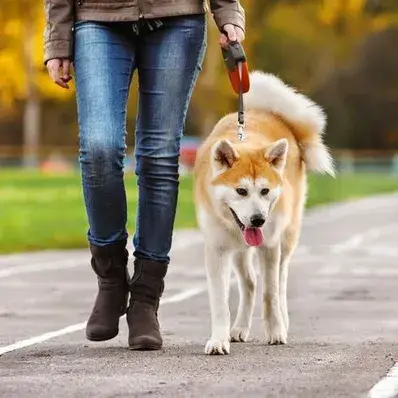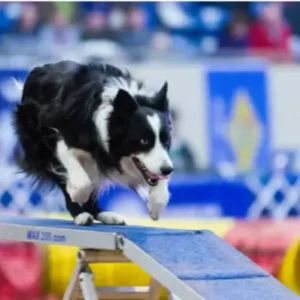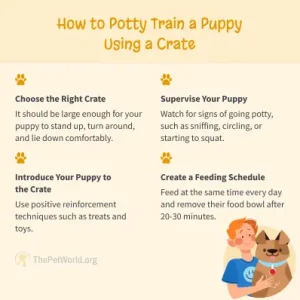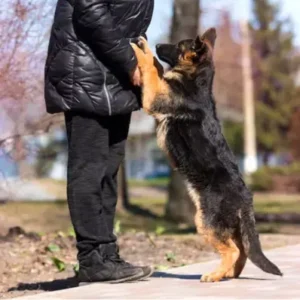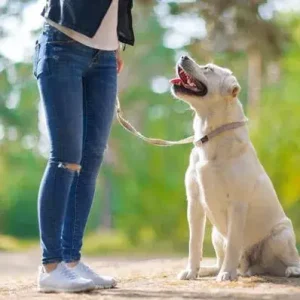Step #1- Getting Your Dog Comfortable with the Leash
The first step is to get your dog breed used to wearing a leash. Start by letting your dog wear the leash indoors for short periods. Use treats and praise to create positive associations with the leash. Gradually increase the amount of time your dog wears it while engaging in play or calm activities.
Step #2- Introducing the Leash Outdoors
Once your dog is comfortable with the leash indoors, start in a quiet, familiar area like your backyard. Keep the walks short and positive, using treats and praise. Ensure the leash isn’t too tight, allowing your dog to move freely as you guide them gently.
Step #3- Teaching Your Dog to Walk on a Leash
Now it’s time for the main training. The goal is to teach your dog to walk calmly by your side without pulling ahead.
Here’s how to get started:
- Keep sessions short: Aim for 5-10 minute sessions, especially at the beginning.
- Use positive reinforcement: Reward your dog with treats or praise when they walk calmly by your side.
- Prevent pulling: If your dog starts pulling, stop walking. Wait for them to return to your side before continuing. This teaches your dog that pulling doesn’t get them where they want to go.
- Consistency is key: Use the same commands and gestures each time to reinforce what you expect.
Step #4- Using Commands for Better Control
To build even more control, teach your dog basic leash commands. Start with commands like “heel” (to walk at your side) or “let’s go” (to encourage movement). Use treats or toys as rewards when they respond to the command.
Incorporate training your dog to sit during walks, as it helps with managing excitement and improving obedience. Be patient and consistent with these cues, as dogs need repetition to learn effectively.
Choosing the Right Leash and Harness for Training
Choosing the right leash and harness is essential for effective leash training. Here’s what you should consider:
Leash: Choosing the Best Type
- Standard Leash (4 to 6 feet): A standard leash is ideal for training, offering good control while giving your dog enough room to move comfortably. A 4-foot leash provides more control; a 6-foot leash allows a bit more freedom.
- Avoid Retractable Leashes: Retractable leashes can encourage pulling and reduce your control, which isn’t ideal for training. A fixed-length leash is safer and allows for quicker responses in emergencies.
- Leash Material: Choose a durable, comfortable leash, typically made of leather or nylon. Avoid overly thin or heavy leashes, which can cause discomfort.
Harness vs. Collar
- Harnesses: Harnesses are ideal for leash training as they distribute pressure evenly and protect the neck, especially for dogs that pull. Front-clip harnesses can help redirect your dog’s attention and discourage pulling.
- Collars: While suitable for trained dogs, collars can strain a dog’s neck when they pull or lunge. For new leash learners or dogs prone to pulling, a harness is often the safer, more comfortable choice.
Fitting the Harness or Collar
- Make sure the harness fits snugly, but not too tight. You should be able to fit two fingers between the harness and your dog’s skin.
- Collars should also fit snugly without being overly tight. The collar should sit below the ears, with enough room to slide two fingers underneath.
Common Leash Training Problems and Solutions
Leash training can come with its fair share of challenges. Understanding common problems and how to handle them will help you stay on track:
Problem: Leash Train a Dog That Pulls
For this use a no-pull harness and stop moving each time they start to pull. Only resume walking when the leash is slack, teaching them that pulling will not get them where they want to go. Leash training a dog to stop pulling requires consistency.
Problem: Leash Train a Dog That Won’t Walk
If your dog refuses to walk, start in a calm environment with short, positive training sessions to build confidence. Reward any forward movement and gradually increase the walking distance as they become more comfortable.
Problem: Leash Train a Dog That Is Not Food Motivated
For a dog that isn’t food motivated, try using toys, verbal praise, or affection as rewards. Identifying what excites your dog will help keep them engaged without relying on treats.
Problem: Leash Train a Dog That Is Scared of the Leash
Allow the dog to sniff and become familiar with the leash without attaching it immediately. Gradually introduce the leash by clipping it indoors and offering gentle encouragement to help them feel secure.
Problem: Leash Train a Dog Without Treats
You can train a dog to walk on a leash without treats by using other forms of positive reinforcement, such as praise, toys, or petting. These alternative rewards can effectively encourage good behavior on the leash.
Problem: Leash Train a Dog That Lays Down
If your dog lies down during leash training, gently encourage them to stand up by calling them forward and rewarding them for taking steps. Practicing in low-distraction environments and gradually increasing walking time will help build their confidence.
Advanced Leash Training Tips
After mastering basic leash training, you can teach advanced leash walking skills.
Increasing Difficulty with Distractions
To master leash training, practice walking in various environments, gradually introducing distractions like other dogs, cyclists, and loud noises. Start in a quiet park and move to busier areas like sidewalks or dog-friendly cafes. Reward calm behavior and practice regularly to reinforce positive walking habits.
Long Walks and Stamina Building
As your dog gains confidence with leash walking, gradually increase the length of your walks to build stamina and reinforce good habits. Start with short walks and extend the duration as your dog learns to stay calm. Monitor their energy levels and take breaks if needed.
Consistency and Patience
Advanced leash training takes time and patience. Keep reinforcing your dog’s progress and practice regularly to maintain good habits. It’s important to stay consistent with commands and reward systems to ensure long-term success.
Why Leash Training is Essential for Dogs
Leash training is essential for your dog’s safety and well-being.
Here’s why:
- Ensures Safety: Teaching your dog to walk on a leash helps protect them from dangers like traffic and other animals, especially in busy areas.
- Reduces Behavioral Issues: Dogs that aren’t leash trained may pull or lunge. Training helps them walk calmly beside you, making walks more enjoyable and reducing the risk of injury from pulling.
- Prevents Anxiety: Early leash training creates positive associations with walks, making your dog feel comfortable and confident rather than fearful.
- Strengthens Bond: It helps establish a consistent routine, build trust, and reinforce your leadership role.
- Improves Socialization: Walking on a leash introduces your dog to new environments and teaches them to stay calm around people, animals, and other distractions.

